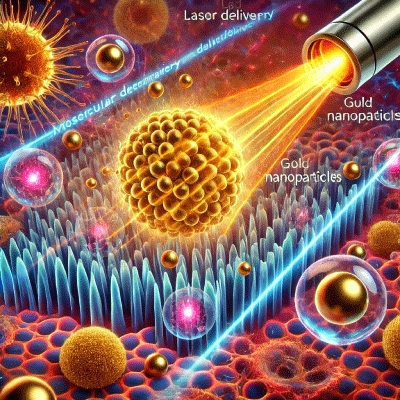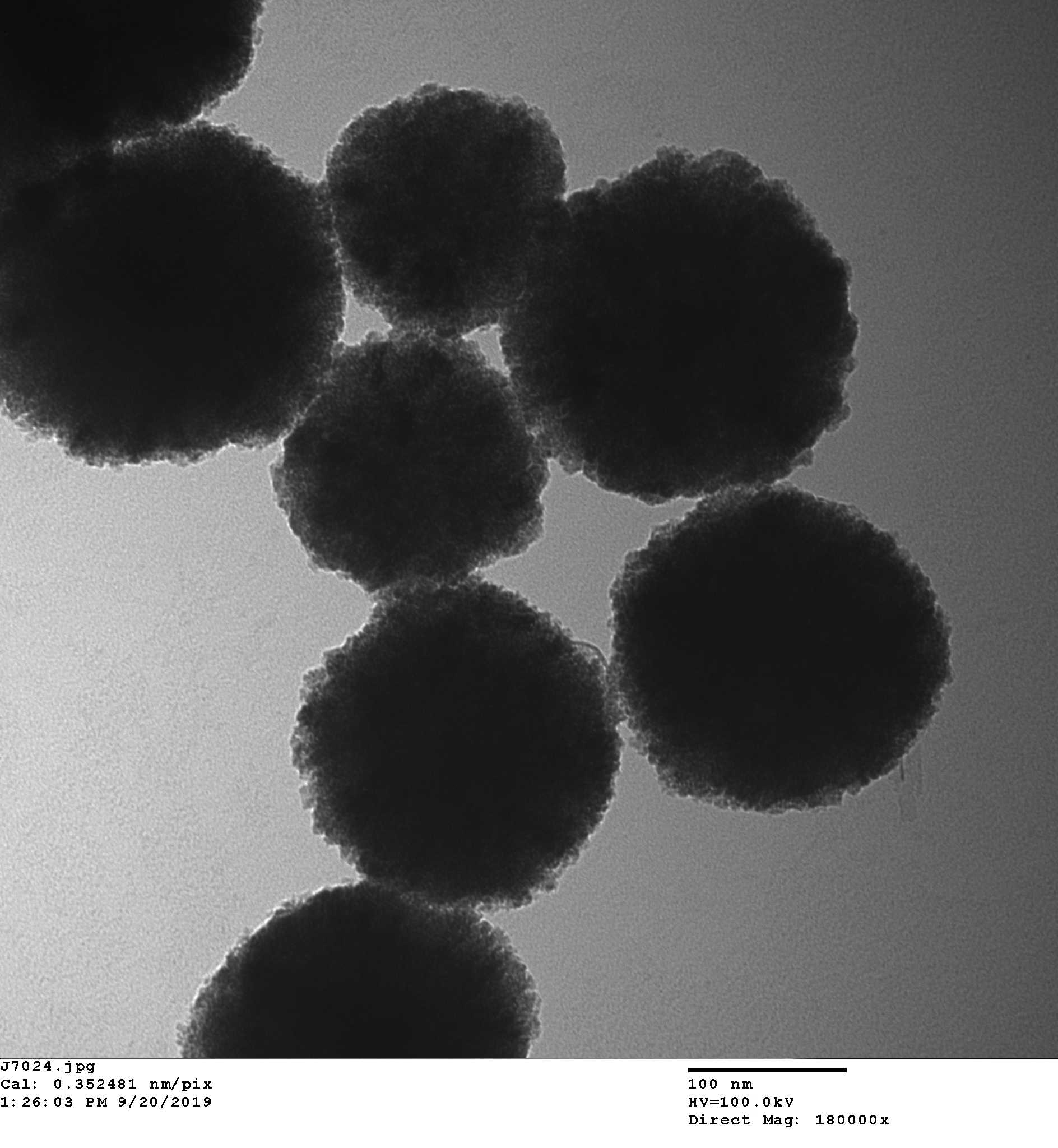Chapter: Revolutionizing Biophotonics with Nanopartz Gold Nanoparticles: Detailed Applications in Optoporation, Photoporation, and Optical Transfection

Image depicting biophotonics applications with gold nanoparticles. It visually represents cellular-level processes like molecular delivery and membrane permeabilization.
Introduction to Biophotonics and Gold Nanoparticles
Biophotonics represents a convergence of biology, photonics, and nanotechnology, focusing on the interaction of light with biological materials. This interdisciplinary field has enabled breakthroughs in cellular manipulation, imaging, diagnostics, and therapy. Among the key components of biophotonics, gold nanoparticles (AuNPs) stand out due to their unparalleled optical and biophysical properties.
Gold nanoparticles are integral to advancing biophotonics. Their localized surface plasmon resonance (LSPR) enables enhanced light absorption and scattering, making them indispensable for techniques requiring precision. Nanopartz, a leading innovator in the nanoparticle space, has tailored gold nanoparticles specifically for biophotonics applications, ensuring high performance, biocompatibility, and consistency.
Gold Nanoparticles in Biophotonics: Properties and Roles
1. Optical Properties Gold nanoparticles exhibit exceptional light absorption and scattering due to LSPR. This property enhances imaging, molecular delivery, and photothermal therapy.
2. Biocompatibility Nanopartz nanoparticles are biologically inert and customizable with surface coatings to improve cellular uptake and minimize toxicity.
3. Versatility Available in various sizes and shapes, Nanopartz gold nanoparticles can be tuned to interact with specific laser wavelengths for diverse applications.
Applications:
- Imaging: Enhancing contrast in optical coherence tomography (OCT) and multiphoton microscopy.
- Therapeutics: Acting as heat sources for photothermal therapy in oncology.
- Drug and Gene Delivery: Facilitating precision molecular delivery via optoporation, photoporation, and optical transfection.
Section I: Optoporation with Nanopartz Gold Nanoparticles
Overview of Optoporation
Optoporation uses laser light to create temporary pores in cell membranes, enabling the delivery of therapeutic agents or genetic material. Gold nanoparticles amplify this process by converting laser energy into localized heat.
How to Use Nanopartz Gold Nanoparticles in Optoporation
-
Selection of Nanoparticles:
- Choose nanoparticles optimized for the laser wavelength used in your study. For example, Nanopartz offers nanoparticles tuned for near-infrared lasers.
- Preparation:
- Suspend nanoparticles in a biocompatible medium and conjugate them with targeting ligands or molecules.
- Experimental Setup:
- Place cells in a well-plate format and expose them to the nanoparticle suspension.
- Use a focused laser beam to irradiate cells at the desired wavelength.
- Optimization:
- Adjust laser power and exposure time to achieve efficient poration without damaging the cells.
Applications in Optoporation
- Gene Therapy: Delivering DNA to cells for treating genetic disorders.
- Cancer Research: Introducing chemotherapeutic agents into tumor cells.
- Cellular Imaging: Labeling cells with fluorescent markers for diagnostics.
Technical Notes:
- Use nanoparticles with consistent size and shape to ensure uniform heating.
- Calibrate laser settings to minimize collateral damage.
Section II: Photoporation with Nanopartz Gold Nanoparticles
Overview of Photoporation
Photoporation involves using pulsed or continuous laser light to permeabilize cell membranes. Nanopartz nanoparticles enhance this process by forming vapor nanobubbles, which create mechanical forces to open cell membranes.
How to Use Nanopartz Gold Nanoparticles in Photoporation
-
Nanoparticle Preparation:
- Use sterile techniques to prepare the nanoparticle suspension.
- Functionalize nanoparticles with specific ligands for targeted delivery.
- Laser Calibration:
- Select a laser wavelength matching the LSPR of the nanoparticles.
- Test laser intensity and pulse duration for optimal nanobubble formation.
- Procedure:
- Introduce nanoparticles into the cellular environment.
- Activate the laser to induce nanobubble formation.
- Verification:
- Confirm successful molecular delivery using imaging or marker assays.
Applications in Photoporation
- Antibiotic Delivery: Penetrating bacterial biofilms to combat resistant infections.
- Protein Delivery: Introducing functional proteins for cellular reprogramming.
- High-Throughput Screening: Delivering multiple drugs into cells for testing.
Technical Notes:
- Ensure uniform nanoparticle dispersion to avoid variability.
- Optimize nanobubble formation for efficient delivery.
Section III: Optical Transfection with Nanopartz Gold Nanoparticles
Overview of Optical Transfection
Optical transfection uses laser energy to deliver genetic material into cells. Nanopartz nanoparticles enhance this precision technique by concentrating laser energy at the target site.
How to Use Nanopartz Gold Nanoparticles in Optical Transfection
-
Nanoparticle Functionalization:
- Conjugate nanoparticles with genetic material or vectors for specific delivery.
- Setup:
- Place cells on a transparent surface to allow focused laser application.
- Add the nanoparticle solution to the cell culture medium.
- Laser Operation:
- Use a femtosecond laser for precision transfection.
- Focus the laser on individual cells to minimize collateral effects.
- Post-Transfection Care:
- Wash cells to remove excess nanoparticles.
- Incubate cells under standard conditions for recovery.
Applications in Optical Transfection
- Cancer Therapy: Modifying gene expression in cancer cells.
- Ocular Research: Delivering genes to retinal cells.
- Regenerative Medicine: Promoting tissue repair through genetic engineering.
Technical Notes:
- Maintain consistent nanoparticle quality for reproducible results.
- Use a live-cell imaging system to monitor the process.
Section IV: Application and Technical Notes
Technical Considerations
- Nanoparticle Size and Shape: Tailor nanoparticle properties to match the application and laser wavelength.
- Laser Parameters: Optimize intensity, duration, and focus for each technique.
- Safety Protocols: Use appropriate shielding and controls to protect personnel and samples.
Application Notes
- Combine optoporation and photoporation for dual delivery of drugs and imaging agents.
- Use optical transfection for precise genetic modifications in single-cell studies.
Conclusion
Nanopartz gold nanoparticles have redefined the landscape of biophotonics, providing researchers with tools for high-precision optoporation, photoporation, and optical transfection. Their unique optical properties, coupled with unparalleled reliability, make them essential for advancing molecular biology, gene therapy, and regenerative medicine.
As biophotonics continues to evolve, Nanopartz remains at the forefront, enabling transformative discoveries and applications in healthcare and scientific research. This chapter serves as a comprehensive guide to leveraging these innovations for groundbreaking results.

